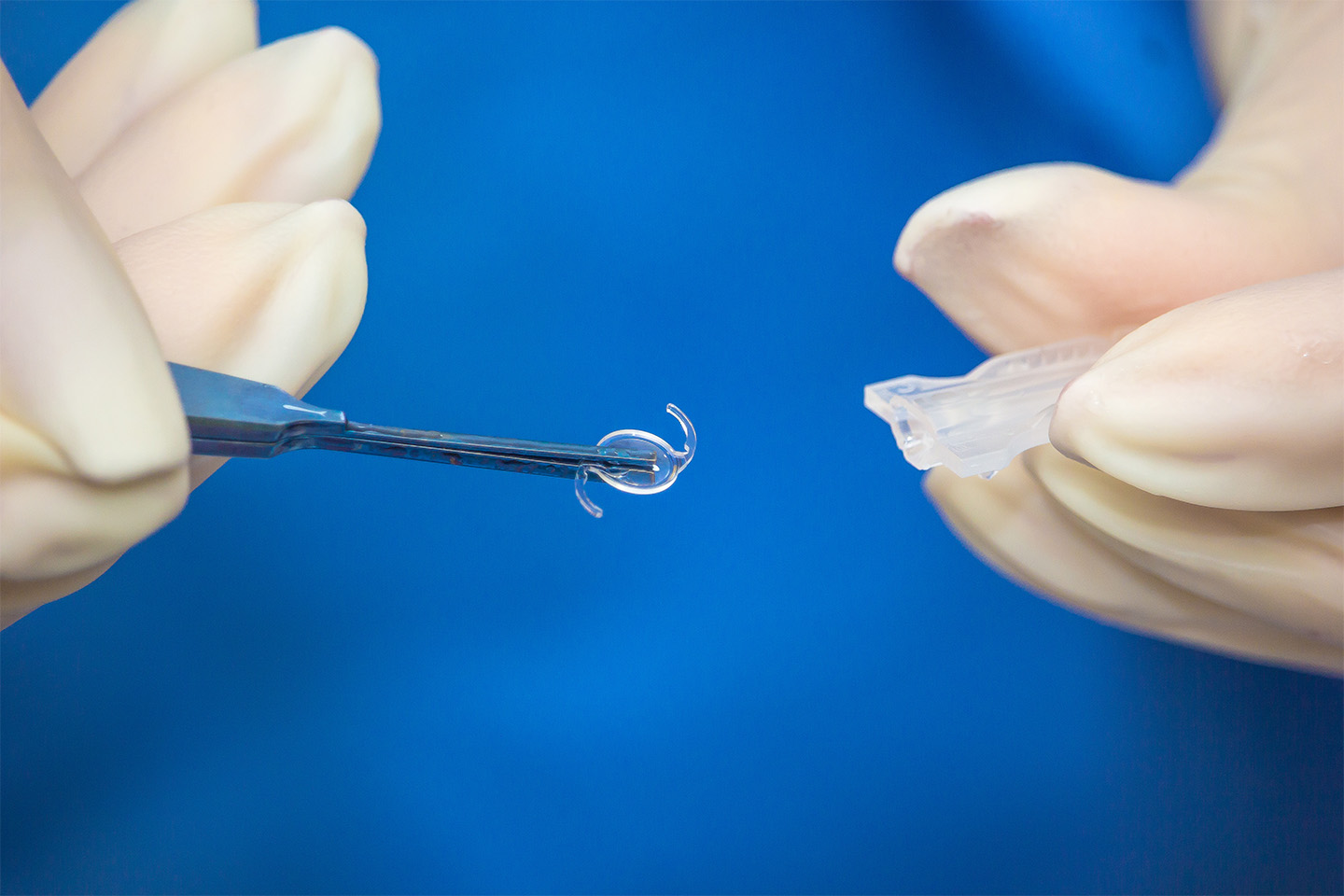The Pros and Cons of Clear Lens Exchange

Millions of people rely on some form of vision correction in the U.S., and many surgical procedures are available for those who want to be free of corrective lenses. Clear lens exchange (CLE), also known as refractive lens exchange (RLE), is one of those options. Here are the pros and cons of CLE.
What Is CLE?
CLE is a vision correction surgery often recommended for patients who have severe dry eyes, thin corneas, or early-onset cataracts and are not LASIK or PRK candidates. It’s a quick and simple outpatient surgery that is very similar to cataract surgery: The eye’s natural lens is replaced with an artificial intraocular lens (IOL). The only difference between the procedures is that with CLE, the lens is replaced before cataracts develop.
Pros of CLE
It can be used to treat a broad range of conditions.
CLE can be used to correct the four most common types of refractive errors: myopia (nearsightedness), hyperopia (farsightedness), astigmatism, and presbyopia, or hardening of the eye’s natural lens, which usually begins to occur in individuals age 40 or older.
It is a quick procedure with a short recovery period.
Each procedure lasts approximately 20 minutes, and the recovery time is typically very short. Most patients experience vision improvement within 24 hours of surgery and fully heal within four weeks.
It has a high success rate.
Studies show success and patient satisfaction rates of approximately 90% to 95%. Success can depend on the individual’s eye health and the type of IOL used.
It is a permanent correction.
The IOL is not affected by age, so there is no further change to the degree of refractive error. Most CLE patients will never require future enhancement procedures or corrective lenses.
It prevents the formation of cataracts.
Cataracts form only on the natural lens of the eye, so replacing the lens prior to cataract development eliminates the need for future cataract surgery.
Cons of CLE
It’s not an option for everyone.
CLE may not be suitable for individuals with certain preexisting conditions, including corneal disease, age-related macular degeneration, diabetic retinopathy, risk factors for retinal detachment (RD), and ocular inflammatory diseases.
It may cause side effects.
Side effects may include blurred or double vision, glare or halos, shadows in your peripheral vision, and droopy eyelids. These are common and most often temporary.
It carries risks of complications.
As with any surgical procedure, there is a potential risk of complications. The most serious complication, although rare, is RD. Patients with extreme myopia and who are younger than 50 have an increased risk of RD. Other possible complications may include the loss of vision caused by damage to the retina, a rupture of the membrane that holds the lens in place (known as posterior capsular rupture), or clouding of the membrane (known as posterior capsular opacification). These complications are also rare and may be corrected with additional surgery.
See If CLE Is Right for You
An experienced eye surgeon can help reduce the risk of complications. Our world-class doctors at Kleiman Evangelista Eye Centers of Texas can determine if you’re a candidate for CLE and discuss the pros and cons of the procedure. If CLE isn’t right for you, don’t worry — we can suggest options that may be better suited for your health and vision goals. We’re committed to putting the needs of our patients first and ensuring safety, comfort, and high-quality results. Contact us today to request an appointment.









